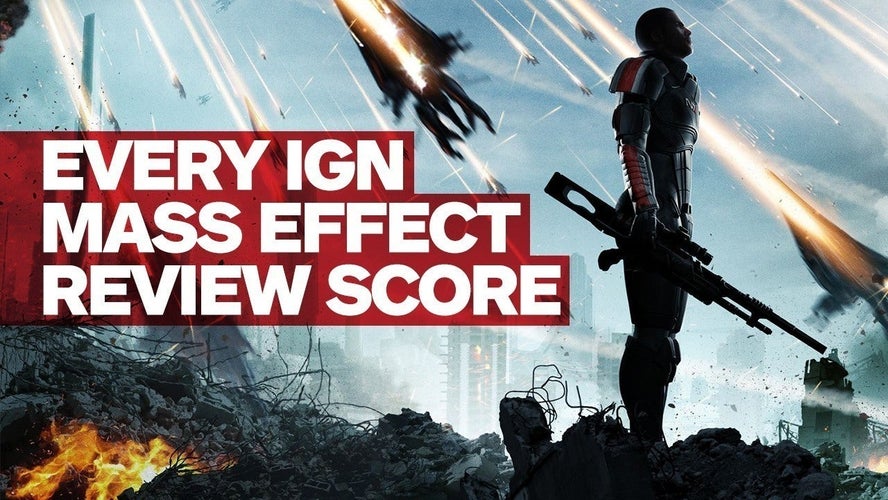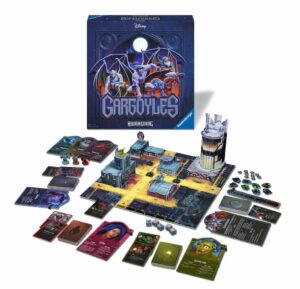Having finished Mass Effect 3 Legendary Edition, it’s hard to fathom why this excellent action role-playing game was quite so controversial when it came out in 2012. Granted, the endings were revised to be both clearer and a bit more nuanced since – and they still aren’t all that good. But the bulk of its 50+ hours are the same, and on the whole it’s as much of a gut-punching, head-scratching continuation of the trilogy as ever. Is it the best Mass Effect? No, not quite – as I said the first time I played it, Mass Effect has followed the same pattern as Star Wars: the original trilogy’s second episode was the high point and the third, while still very strong and visually impressive, didn’t quite stack up (and everything after was questionable at best). Its final moments may not quite stick the landing, but just about everything up to that point is stellar.
As far as the remastering goes, Mass Effect 3 Legendary Edition has seen the fewest changes of the Legendary trilogy. It looks roughly the same as Mass Effect 2’s Legendary version, holding up nicely thanks to its improved textures and more detailed models. I still remember being taken aback by the horribly smeared textures on uniforms in the opening scene when I first played on PC in 2012, but here they’re sharp as can be in 4K, right down to the medals on chests. Only a few things stand out as stiffly animated or chunkily low resolution (like Admiral Anderson’s weird armored baseball cap, for instance), and although you can still expect a fair number of animation glitches, I never hit anything more severe than that. Rest assured, watching numerous full-blown Reapers strut their high-definition stuff as they wreak havoc across a battlefield does feel like a great payoff to two games’ worth of buildup for this race of sentient war machines.
Also, the Legendary Edition is strictly single-player; the entire co-op multiplayer horde mode has been removed. You’ll still get to run through a few of its missions with your AI squadmates at least once as side missions, but otherwise it’s entirely gone. Granted, I never did like how I felt obligated to grind out points in multiplayer to make sure I wasn’t missing out on anything in my single-player campaign – that felt like a coercive means of making people participate in a mode they might not be interested in – and the multiplayer was always a sideshow to the huge RPG. However, it does seem to go against the spirit of the “Legendary Edition” to leave out such a significant chunk of what Mass Effect 3 originally was.
The only other notable change to the Legendary Edition (among a handful of minor tweaks) is that BioWare has toned down the cutscene camera’s gratuitous focus on womens’ butts a bit. There’s still quite a bit of cheek on display, but this time around the camera just knows when to use it more appropriately: it’s one thing to linger on some nigh-impossible curves when we’re in a flirtatious scene with one of Mass Effect 3’s multiple romance options, but quite another when we’re supposed to be taking someone seriously as they discuss the dire state of the galaxy. It’s more in line with what we saw in the previous two games, and that improved dignity didn’t come at the expense of the more intimate moments between characters.
“
Setting out into the Milky Way, the structure of Mass Effect 3 immediately feels more linear than that of ME2. That’s a natural consequence of the story being much more about winning a war for survival against the Reapers than it is about meandering around the galaxy, exploring and building a team at your own pace. BioWare also did away with scanning planets for mineral upgrade currencies almost entirely… and yet, as sick of that as I was by the time I finished ME2, going directly into ME3 I did miss some of that freedom and the sense that any planet might contain some valuable resource worth searching for. In hindsight, the incentive to just wander the stars that it and the clumsy Mako created were… probably worth it? That’s hard to say after having disliked those mechanics but now there’s a hole left where they were.
The accelerated pace and focus on guns-blazing action does work just fine, though, because Mass Effect 3 has an enormous pile of stuff to do – and I did just about all of it. That’s especially true with the impressively meaty Leviathan, Citadel, and Omega DLC expansions integrated into the campaign, making it feel bottomless while I was in the midst of it.
“
How much did I do? Hard to say. For some notoriously buggy reason, the “Time Played” game clock on my completed Mass Effect 3 save says I’ve been at it for 287 hours. I’m pretty sure that’s a wild exaggeration – our friends at HowLongtoBeat.com list an average completionist run of Mass Effect 3 at about 51 hours, and I might’ve been a tad slower than that because I played on Hardcore difficulty. But after playing through the entire expanded trilogy in succession over a period of months, that number doesn’t feel as wrong as it should. And Mass Effect 3 is the biggest of the three.
When it came to my new playthrough, though, I learned a lot. Because of EA’s extremely questionable decision to carve him out as launch-day DLC back when it first came out, this was my first time playing with the prothean companion, Javvik. His presence adds so much background and insight into the previous cycle’s ancient war with the Reapers and the true nature of the prothean culture that it’s mind boggling to think that he just… wasn’t there for my first playthrough. It’s a relief that no one who picks up Mass Effect 3 going forward will have that incomplete story experience. Also, Javvik’s cold, dispassionate demeanor is especially welcome considering how little of Thane Krios we get in this game, so I took Javvik with me on nearly every mission.
“
Though we have fewer available companions this time (a max of seven, down from ME2’s 12), just about everybody who survived ME2 will show up in some way during the story, and pretty much everything gets wrapped up one way or another. A whole lot of ground is covered, even as the threat of the Reaper invasion looms large: The Illusive Man gets a conclusion; the krogan genophage is resolved; the war between the geth and the quarians ends; a battle is fought for the future of the Omega space station; we learn who first created the Reapers; and we have a party which, naturally, is crashed by bad guys. All of these and more have significant decisions to make that determine their outcomes and who lives and dies, which is the key part of what makes a Mass Effect game shine.
In fact, there are so many characters in play that it feels gratuitous to introduce more, which may be why, outside of Javvik, there aren’t a lot of new standouts to add to the star-studded voice cast ensemble.
One terrible choice that BioWare made was to introduce, out of the blue, a new enemy: Kai Leng is a generic space ninja assassin with no meaningful impact on the story or interesting background to motivate him. He’s about as deep an antagonist as Darth Maul in Star Wars: The Phantom Menace; unless you read up on his story outside of Mass Effect 3, there’s not much to him other than blindly following the evil orders he’s given. The fact that he can be responsible for the deaths of major characters if you fail to stop him feels like a cheap way to end their stories. Thankfully, he doesn’t show up all that often.
“
Speaking of deaths, having played through as a Paragon back in 2012 I was impressed at how dirty I could get Shepard’s hands when choosing the Renegade options. More than one former squadmate died as a direct result of my ruthless actions, which gave satisfying heft to my choices. I’d have loved to have seen a bit more fallout from those decisions, especially since this was the final game of the trilogy and nothing had to be carried forward, but there was still plenty to think about as I threw as many people under the bus as I could in order to save Earth.
I have to say, though, with Mass Effect 3’s co-op multiplayer component removed in the Legendary Edition, I especially dislike the vestigial “war points” system that was likely made with it in mind. It tallies up your progress in building an anti-Reaper alliance with cold, hard numbers in a way that feels reductive and game-y, arbitrarily putting a point value on whatever soldiers or starships you recruit to your cause. That demystifies the outcome of the war for survival and turns it into a series of equations with right and wrong answers. This kind of thing has been there all along, but Mass Effect has been good about hiding the raw calculations from us until now.
My Vanguard-class Shepard relied heavily on pistols, keeping the load light so that my biotic powers recharged faster and I could dish out explosive combos that encourage the use of a variety of attacks for extra damage. I admire how well that equipment system is balanced; choosing instead to take lots of guns would dramatically increase the cooldown timer on my telekinetic blasts and throws, but I’d have a much larger pool of ammunition to work with in a fight. Playing on Hardcore I found it more valuable to have the unlimited ammunition of biotics to wear down tough enemies, but bullets are plentiful enough that it wouldn’t have been impractical to shoot my way through.
“
Enemy variety is a strong point thanks to the typical soldiers, alien creatures, and robots being joined by Reaperized versions that come at you in droves. They can certainly feel bullet spongey – especially the powerful Banshees and Brutes that are sent out in large numbers toward the end of the campaign, which have layers of shields and armor that must be peeled away with appropriate attacks – but there’s enough nuance to the combat to keep it interesting even for dozens of hours. I did find that it was often difficult to pick my squad on some missions without knowing what enemies I’d face and whose powers would be best suited to taking them down; that feels like something that you optimize for on your next playthrough using your knowledge of what’s to come, and it did lead to a few situations where I found myself poorly equipped for a fight and had to retry multiple times.
One disappointing thing is that no matter what you chose for the rachni queen’s fate in Mass Effect 1, you’ll still run up against Reaperized rachni artillery here. Inconsistencies like that take away from the promise of a contiguous Mass Effect story, and I’d love to have known that I was only facing them because I’d shown the rachni queen mercy and was now dealing with the consequences of being a Paragon (especially given how often they killed me).
Overall, combat is the best it’s been in the trilogy, and a fitting culmination of everything that came before it. I didn’t miss the lack of vehicle sections like the Mako or Hammerhead – Mass Effect 3 works great on foot, and the occasional cutscene showing an epic space battle kept it feeling like the scale was larger than an infantry skirmish.
Without getting into the spoilery nature of the ending itself, I can say that the possible conclusions to the story are certainly more fleshed out now than they were when I originally played. Where I was once left wondering who had survived and who had died, these expanded epilogues spell out the consequences of your final decision clearly and impactfully. However, the fundamental problem with the ending is that virtually nothing you’ve done up to that point matters in the decision or outcomes. You can artificially restrict your own choices if you want to keep your roleplaying consistent, but there was no tangible reward or punishment for my playing two full games as Renegade Shepard; as long as I’d done enough side missions to crank up my War Points I could still choose any ending, including the “good” one, if I wanted to (I didn’t).
Source: https://www.ign.com/articles/mass-effect-3-legendary-edition-review
- "
- 4k
- 7
- 9
- Action
- AI
- alien
- All
- Alliance
- among
- animated
- Animation
- around
- audience
- average
- Baseball
- Battle
- Battlefield
- BEST
- Biggest
- Bit
- build
- Building
- bus
- Campaign
- Cause
- change
- comparison
- component
- Conclusion
- Connections
- consequences
- Couple
- Culture
- currencies
- damage
- Dating
- dealing
- DID
- died
- dozens
- driving
- earth
- ends
- equipment
- Expand
- experience
- Face
- facing
- fair
- fallout
- fine
- First
- first time
- flow
- Focus
- Forward
- Freedom
- full
- future
- Galaxy
- game
- gameplay
- Games
- Glitches
- good
- graphics
- great
- guns
- here
- High
- hold
- How
- HTTPS
- huge
- i
- image
- Impact
- Including
- Increase
- IT
- keeping
- Key
- knowledge
- large
- lead
- LEARN
- learned
- Led
- light
- Line
- List
- load
- Long
- love
- Machines
- major
- Making
- man
- Matters
- May
- Mechanics
- menace
- Mission
- models
- Modern
- months
- multiplayer
- numbers
- open
- optimize
- Options
- order
- orders
- Other
- participate
- Pattern
- PC
- People
- phantom
- planet
- planets
- play
- Playing
- Plenty
- pool
- Race
- Raw
- relief
- resource
- responsible
- REST
- review
- robots
- Role-Playing
- Run
- s
- Scale
- scanning
- sense
- Series
- shine
- So
- Space
- space station
- Star Wars
- State
- Stellar
- Stories
- system
- The
- time
- Updates
- us
- value
- vehicle
- Voice
- war
- What
- WHO
- winning
- Work
- works
- worth







